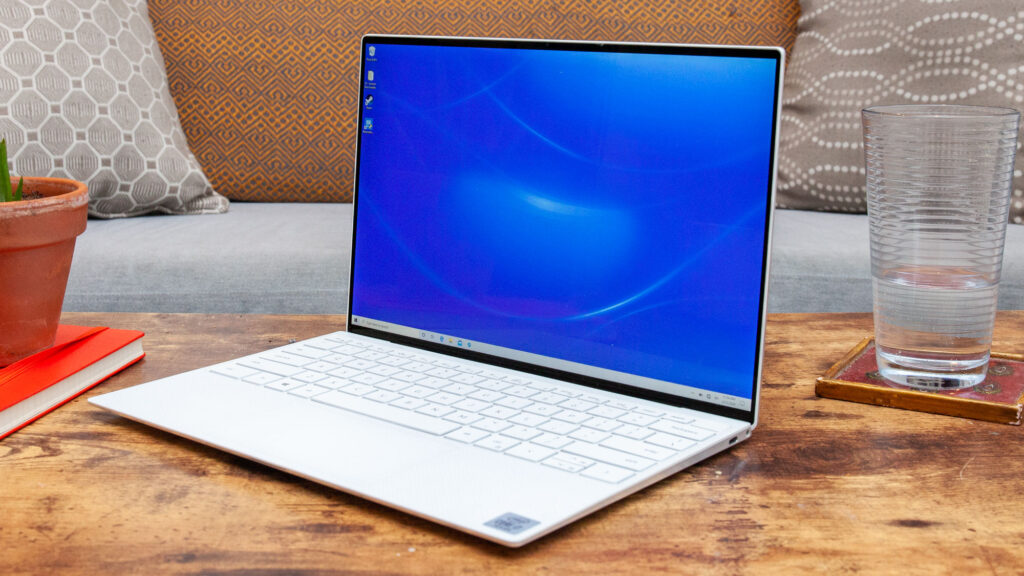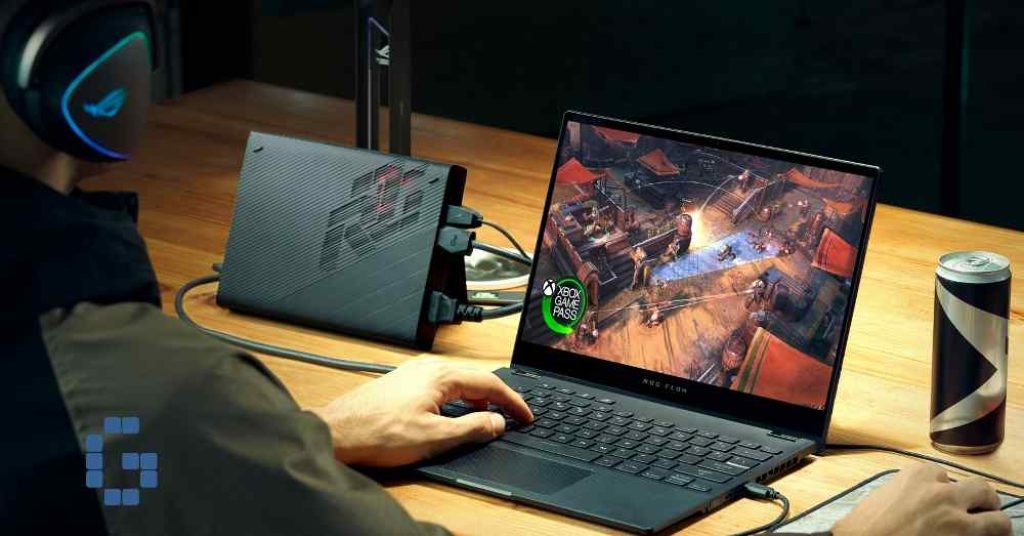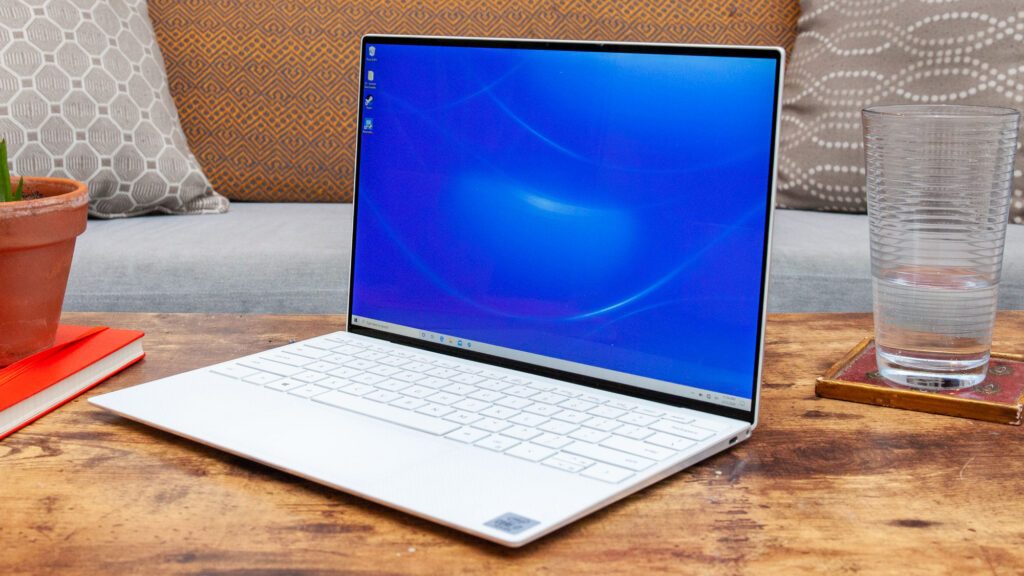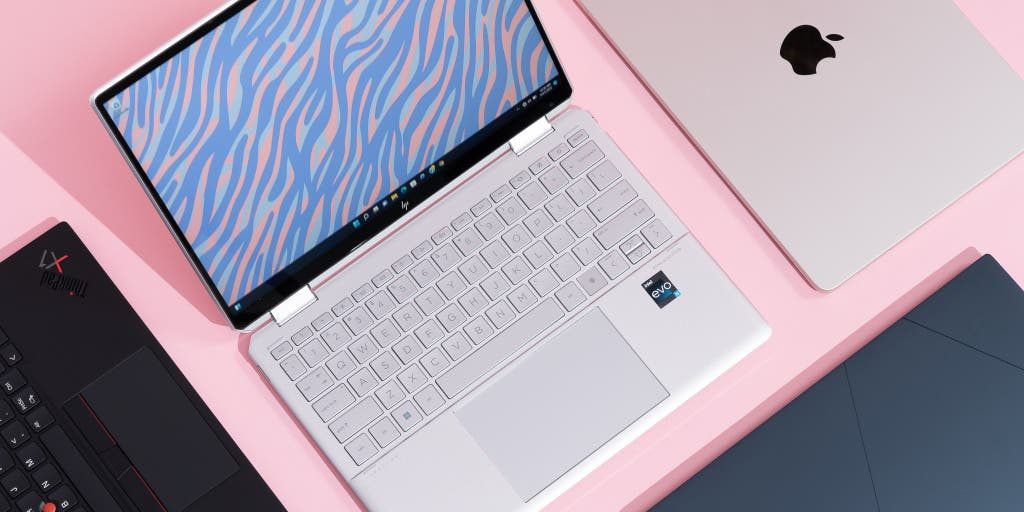How Much Does The Average Ultrabook Cost?

So, you’re in the market for a new laptop and you’ve set your sights on an ultrabook. But before you make your purchase, have you ever wondered just how much these sleek and compact devices actually cost? We all know that the latest gadgets tend to come with a hefty price tag, but is that the case with ultrabooks? In this article, I’ll be shedding some light on the average cost of these high-performance machines, so you can make an informed decision without breaking the bank.
What is an Ultrabook?
Definition of Ultrabook
Mentioned as a sleek, lightweight, and high-performance laptop, an Ultrabook is a term coined by Intel to describe a specific category of laptops that meet a set of criteria. These criteria include a thin and lightweight design, fast boot-up time, long battery life, and powerful performance. Ultrabooks are designed to provide the perfect balance between portability and performance, making them an appealing choice for professionals, frequent travelers, and students who require a powerful yet highly portable computing device.
Origins and History of Ultrabooks
The concept of Ultrabooks was introduced by Intel in 2011 as a response to the rising popularity of tablets and smartphones. With the goal of creating a new category of portable laptops, Intel set out to develop laptops that would combine the best features of tablets and traditional laptops. The Ultrabook initiative aimed to revolutionize the laptop market by incorporating cutting-edge technologies and design elements, such as solid-state drives (SSDs), ultra-thin form factors, and longer battery life.
Since their introduction, Ultrabooks have become increasingly popular among consumers and professionals alike. The demand for slim and lightweight laptops with powerful performance has driven manufacturers to innovate and improve the Ultrabook category. Today, Ultrabooks are no longer limited to a single brand or manufacturer, with a wide range of options available from various companies.
Key features of an Ultrabook
One of the key features of an Ultrabook is its slim and lightweight design. Ultrabooks are typically less than an inch thick and weigh less than five pounds, making them highly portable and easy to carry around. They are designed to fit easily into backpacks or briefcases, enabling users to take them wherever they go.
In terms of performance, Ultrabooks are equipped with high-performing processors, ample RAM, and speedy solid-state drives (SSDs) that contribute to faster boot-up times and overall system responsiveness. These powerful components make Ultrabooks suitable for demanding tasks such as multitasking, photo and video editing, and even light gaming.
Battery life is another important factor that sets Ultrabooks apart from traditional laptops. The combination of energy-efficient components and advanced power management technologies enables Ultrabooks to deliver extended battery life, often lasting up to 10 hours or more on a single charge. This is ideal for users who are frequently on the move and need a device that can keep up with their daily activities without constantly seeking a power outlet.
Ultrabooks also feature high-quality displays, with many models offering full HD or even 4K resolutions. These vibrant and sharp screens provide an excellent viewing experience for both work and entertainment purposes, whether it’s creating presentations, editing videos, or streaming movies and TV shows.
Overall, the key features of an Ultrabook include its slim and lightweight design, powerful performance, long battery life, and high-quality display. These features combine to create a laptop that is highly portable, efficient, and capable of handling a wide range of tasks.
Price Range of Ultrabooks
Low-end Ultrabooks
Low-end Ultrabooks typically fall within the price range of $500 to $800. These entry-level models are often equipped with lower-tier processors, such as Intel Core i3 or i5, and come with 8GB of RAM and smaller storage options, usually around 256GB. While they may not offer the same level of performance and storage capacity as higher-end Ultrabooks, they still provide decent functionality for everyday tasks such as web browsing, word processing, and light multimedia consumption.
Mid-range Ultrabooks
Mid-range Ultrabooks range in price from $800 to $1,500. These models usually feature more powerful processors, such as Intel Core i5 or i7, and offer larger storage capacities of 512GB or even 1TB. They also tend to have more RAM, typically ranging from 8GB to 16GB, which allows for smoother multitasking and better overall performance. Mid-range Ultrabooks strike a balance between affordability and performance, making them a popular choice for users who require a device capable of handling more demanding tasks such as photo and video editing, as well as moderate gaming.
High-end Ultrabooks
High-end Ultrabooks are at the top tier of the price range, typically costing $1,500 and above. These premium models feature the latest and most powerful processors, such as Intel Core i7 or even Intel Core i9, along with large amounts of RAM ranging from 16GB to 32GB. High-end Ultrabooks often come with generous storage options, offering 1TB SSDs or more. These top-of-the-line specifications provide exceptional performance for resource-intensive tasks such as 3D modeling, video rendering, and advanced gaming. Additionally, high-end Ultrabooks often boast additional features such as touchscreen displays, convertible form factors, and advanced security features.
The price range of Ultrabooks allows for a variety of options to suit different budgets and requirements. While low-end Ultrabooks offer decent functionality at a more affordable price, mid-range and high-end Ultrabooks offer superior performance and additional features for users who demand a higher level of performance and are willing to invest accordingly.

This image is property of leaguefeed.net.
Factors Influencing Ultrabook Price
Brand of the Ultrabook
The brand of the Ultrabook can have a significant impact on its price. Established and reputable brands, such as Apple, Dell, HP, Lenovo, and Microsoft, often command higher prices due to their brand reputation, extensive customer support, and reliability. These brands also tend to invest more in research and development, leading to innovative features and cutting-edge technologies that are reflected in the higher price tags of their Ultrabooks. However, there are also lesser-known brands that offer competitive Ultrabook options at more affordable prices, making brand choice a factor to consider based on personal preference, budget, and desired features.
Specifications and Features
Ultrabooks with more powerful processors, larger amounts of RAM, and larger storage capacities generally come with higher price tags. The performance capabilities and storage capacity of an Ultrabook directly affect its functionality and ability to handle demanding tasks. Similarly, additional features such as touchscreen displays, convertible form factors, and advanced security features can add to the cost of an Ultrabook. Users should determine their specific needs and prioritize the specifications and features they require when considering an Ultrabook purchase.
Design and Materials
The design and materials used in the construction of an Ultrabook can also influence its price. Ultrabooks with premium builds, such as those made from aluminum or carbon fiber, often come at a higher cost due to the durability and aesthetics these materials provide. Furthermore, sleek and thin designs that prioritize portability and aesthetics may come with a premium price tag. Users should balance their desire for a visually appealing and durable Ultrabook with their budget to find the right combination of design and affordability.
Consideration of these factors allows users to make an informed decision when purchasing an Ultrabook, ensuring that they prioritize features, performance, and design elements according to their specific needs and budget constraints.
Noteworthy Ultrabook Brands and Their Average Prices
Apple MacBook Air
Known for its sleek design, exceptional build quality, and seamless integration with Apple’s ecosystem, the MacBook Air is one of the most popular Ultrabooks on the market. Prices for the MacBook Air typically start at around $999 for the base model, making it a premium option for users who value the Apple brand and its ecosystem. Apple’s commitment to design, performance, and customer service helps justify the higher price tag for many consumers.
Dell XPS
Dell’s XPS lineup has gained a reputation for its premium quality, powerful performance, and stunning displays. The XPS series offers a range of models starting from around $1,000 up to $2,000 or more for high-end configurations. The XPS laptops consistently receive praise for their build quality, excellent displays, and strong performance, making them a popular choice among professionals and content creators.
HP Spectre
HP’s Spectre series combines style, performance, and innovation in its Ultrabooks. The Spectre models feature sleek and lightweight designs along with powerful hardware, including Intel Core i7 processors, ample RAM, and high-resolution displays. Prices for HP Spectre Ultrabooks can range from around $1,000 to $2,500 depending on the configuration, making them a premium option for users who prioritize performance and design.
Lenovo Yoga
Lenovo’s Yoga series offers a versatile range of Ultrabooks with 2-in-1 convertible form factors. The Yoga laptops can be used as traditional laptops or transformed into tablets, making them suitable for both work and leisure. The price range for Lenovo Yoga Ultrabooks starts from around $800 up to $2,000 or more for higher-end models with advanced features and specifications.
Microsoft Surface Pro
The Microsoft Surface Pro lineup blurs the line between tablets and laptops, offering a compact and portable 2-in-1 Ultrabook solution. Prices for the Surface Pro start at around $799 for the base model, and can go up to $2,300 or more for higher-end configurations. The Surface Pro’s versatility, high-quality displays, and integration with Microsoft’s software ecosystem make it a preferred choice for users seeking a portable and efficient computing device.
Considering the average prices of these noteworthy Ultrabook brands helps users understand the range of options available and make an informed decision based on their preferences, budget, and required features.

This image is property of cdn.thewirecutter.com.
Detailed Breakdown of Ultrabook Costs
Cost of Hardware
The cost of hardware components plays a significant role in the overall price of an Ultrabook. Key components such as the processor, RAM, storage, and display contribute to the overall cost. More powerful processors and larger amounts of RAM tend to be more expensive. Additionally, the type and capacity of the storage drive, whether it is a traditional hard drive or a solid-state drive (SSD), also influence the price. High-quality displays with higher resolutions, such as full HD or 4K, also add to the cost. Manufacturers carefully select and integrate these hardware components to ensure optimal performance and functionality, which is reflected in the pricing of Ultrabooks.
Cost of Software
Included software and operating systems also add to the cost of Ultrabooks. Windows operating systems, such as Windows 10 Home or Windows 10 Pro, are the most common choices for Ultrabooks. These operating systems come with a licensing fee, which manufacturers factor into the overall price. Additionally, Ultrabooks may include pre-installed software or trial versions of popular applications, such as Microsoft Office or antivirus programs, adding value but also contributing to the cost.
Marketing and Distribution Costs
Marketing and distribution costs are also factors that influence the price of Ultrabooks. Manufacturers invest in various marketing activities, such as advertisements, promotions, and sponsorships, to create brand awareness and drive sales. These costs are factored into the price of Ultrabooks. Additionally, the process of distributing Ultrabooks to retailers and ensuring availability across various markets requires a significant investment in logistics and distribution networks, which also contributes to the final cost.
Considering these detailed breakdowns of Ultrabook costs helps users understand the value they are receiving for their investment. The combination of carefully selected and integrated hardware components, software, and marketing efforts contributes to the overall price of Ultrabooks.
Role of Market Competition in Ultrabook Pricing
Impact of New Releases
The market for Ultrabooks is highly competitive, with various manufacturers vying for consumer attention. New releases from different brands often drive competition, leading to price fluctuations and promotional offers. When a new Ultrabook model is introduced, older models may experience price reductions as manufacturers attempt to clear inventory and make way for the latest devices. Additionally, the introduction of new technologies, improved performance, and innovative features in new releases may lead to higher prices for the latest Ultrabooks. Monitoring the market for new releases and taking advantage of price drops can help consumers find the best deals.
Price War among Manufacturers
Competition among manufacturers also results in price wars, where each brand attempts to offer the best value for a given price point. This competition encourages manufacturers to constantly innovate, improve quality, and offer attractive pricing to gain a competitive edge. As a consumer, this intense competition can work to your advantage, as it drives manufacturers to offer better features, performance, and build quality at competitive prices.
Taking advantage of market competition requires research and comparison shopping. By monitoring and comparing prices, features, and reviews across different brands, consumers can find the best Ultrabook option that meets their specific needs and budget.

This image is property of www.crisisshelter.org.
Annual Changes in Ultrabook Prices
Price Trends over the Years
Ultrabook prices have experienced significant changes over the years due to advancements in technology, market trends, and competition. Initially, Ultrabooks were relatively expensive when they were first introduced, with prices ranging from $1,000 to $1,500 for entry-level models. However, as more manufacturers entered the market and technology advanced, prices gradually became more affordable.
Over time, prices have become more competitive, and consumers can now find entry-level Ultrabooks starting as low as $500. The introduction of new processors, increased availability of solid-state drives, and advancements in display technology have contributed to the decrease in prices. Additionally, market competition among manufacturers has led to aggressive pricing strategies, making Ultrabooks more accessible to a wider range of consumers.
Forecasts for Future Ultrabook Costs
Forecasting future Ultrabook prices is challenging due to the fast pace of technological advancements and the dynamic nature of the market. However, it is expected that prices will continue to become more competitive as technology evolves and manufacturing processes become more cost-effective. As new and more powerful processors, increased storage capacities, and higher-resolution displays become standard features, their costs are likely to decrease.
Furthermore, advancements in manufacturing techniques, such as improved production yields and economies of scale, are also expected to contribute to lower production costs, which can, in turn, lead to lower prices for consumers. However, it is important to remember that as newer and more advanced technologies are introduced, higher-end Ultrabooks with premium features may continue to command higher prices.
Comparing Ultrabooks With Other Laptop Categories
Ultrabooks vs Traditional Laptops
When comparing Ultrabooks with traditional laptops, several key differences become apparent. Ultrabooks prioritize portability and sleek designs, aiming to strike a balance between performance and mobility. Traditional laptops, on the other hand, often prioritize performance and offer larger form factors with additional connectivity options such as optical drives and more extensive port selections.
Ultrabooks typically feature slim profiles, weighing less than traditional laptops, making them easier to carry and transport. Traditional laptops tend to be bulkier and heavier, appealing to users who require more power and are less concerned about portability.
Another point of differentiation is battery life. Ultrabooks are designed to offer longer battery life due to energy-efficient components and advanced power management. Traditional laptops may provide shorter battery life, requiring users to be closer to a power source or rely on additional batteries.
While Ultrabooks typically sacrifice some features such as optical drives and extensive connectivity options in favor of portability, traditional laptops often offer a wider range of ports and features that cater to specific user needs, such as Ethernet ports, VGA ports, and more USB ports.
Ultimately, the choice between an Ultrabook and a traditional laptop depends on individual needs and preferences. Users who prioritize portability, sleek design, and longer battery life may find Ultrabooks to be the better option, while those who require more power, extensive connectivity options, and larger screens may opt for traditional laptops.
Ultrabooks vs 2-in-1 Laptops
2-in-1 laptops, also known as convertible laptops or hybrid laptops, offer the convenience of both a laptop and a tablet in a single device. These laptops can be used in traditional laptop mode or transformed into a tablet by detaching or folding the keyboard. This flexibility allows users to switch between laptop productivity and tablet mobility as needed.
In comparison, Ultrabooks are primarily designed to be a lightweight and powerful laptop, with a focus on portability and performance. While some Ultrabooks may offer touchscreen displays or the ability to rotate the screen 360 degrees, they do not typically offer the same level of flexibility as 2-in-1 laptops.
The decision between an Ultrabook and a 2-in-1 laptop depends on the specific needs and preferences of the user. Users who value the convenience of a laptop and tablet in a single device may prefer a 2-in-1 laptop. Alternatively, users who prioritize performance, sleek design, and long battery life may opt for an Ultrabook.
Ultrabooks vs Gaming Laptops
Gaming laptops are designed to provide the best possible gaming experience, with powerful processors, dedicated graphics cards, high-refresh-rate displays, and advanced cooling systems. These laptops are capable of running demanding games and handling resource-intensive tasks.
Ultrabooks, on the other hand, sacrifice some gaming performance in favor of portability, sleek design, and longer battery life. While Ultrabooks can handle light gaming and less demanding titles, they are not typically designed to offer the same level of gaming performance as dedicated gaming laptops. Ultrabooks may have integrated graphics or less powerful dedicated graphics cards, which may limit their ability to run the latest graphically demanding games smoothly.
However, there are Ultrabooks designed specifically for gaming, often referred to as gaming Ultrabooks. These models offer more powerful processors, dedicated graphics cards, and high-refresh-rate displays to provide a better gaming experience. Gaming Ultrabooks may offer a compromise between performance and portability, but they generally come at a higher price point compared to regular Ultrabooks.
Choosing between an Ultrabook and a gaming laptop depends on the user’s priorities. Users who value portability, sleek design, and long battery life while still being able to play less demanding games may find an Ultrabook suitable for their needs. Those who prioritize optimal gaming performance and are willing to sacrifice a bit of portability may opt for a gaming laptop.

This image is property of www.novarodigital.com.
Smart Buying Tips for Ultrabooks
Best Time to Buy
The best time to buy an Ultrabook varies depending on multiple factors, such as new releases, seasonal promotions, and sales events. One common time to find good deals is during major shopping events like Black Friday, Cyber Monday, or the holiday season. During these periods, many retailers offer significant discounts on a wide range of electronic devices, including Ultrabooks. Spring and summer are also good times to look for deals, as manufacturers often introduce new models and offer discounts on previous generations to clear inventory.
Monitoring technology news and retailer websites can help identify promotions and discounts. Additionally, it can be beneficial to research and compare prices across different retailers, both online and in physical stores, to find the best deal.
Checking for Discounts and Sales
Regularly checking for discounts and sales is an effective way to save money when buying an Ultrabook. Retailers often offer limited-time promotions or flash sales, providing discounts or other incentives. Subscribing to retailer newsletters or following them on social media platforms can help users stay informed about the latest deals and discounts. Price-comparison websites can also be useful for comparing prices across different retailers to find the best offer.
Buying Refurbished or Used Ultrabooks
Consideration can be given to purchasing refurbished or used Ultrabooks to save money. Refurbished Ultrabooks are devices that have been returned to the manufacturer or retailer, inspected, restored to their original condition, and certified to be in working order. These devices often come with a warranty and significant savings compared to the original price. Purchasing refurbished Ultrabooks can be a cost-effective option for users who are willing to accept a slight reduction in cosmetic condition in exchange for more affordable pricing.
Similarly, buying used Ultrabooks from reputable sources can also offer significant savings. However, it is essential to research the seller, check the device’s condition, and inquire about any warranties or support. Inspecting the device in person or requesting detailed photos of the device can help assess its condition before making a purchase. Buying from well-established online marketplaces or directly from trusted individuals can help ensure a safer and more reliable purchasing experience.
By utilizing these smart buying tips, users can find excellent deals and potentially save a significant amount of money when purchasing an Ultrabook.
Conclusion: Is an Ultrabook Worth the Price?
Advantages of Buying an Ultrabook
Ultrabooks offer several advantages that make them worth the price for many consumers. The slim and lightweight design of Ultrabooks makes them highly portable and convenient for users on the go. Whether commuting or traveling, Ultrabooks are easy to carry and offer a comfortable computing experience.
The combination of powerful processors, ample RAM, and solid-state drives (SSDs) allows Ultrabooks to deliver high-performance computing for demanding tasks. From productivity applications to multimedia editing, Ultrabooks can handle a wide range of activities without compromising efficiency.
Long battery life is a significant advantage of Ultrabooks, allowing users to work or play for extended periods without needing to constantly be near a power outlet. This feature is especially beneficial for frequent travelers, students, and professionals who require a device that can last throughout the day.
Ultrabooks also offer vibrant and high-resolution displays, providing an enjoyable viewing experience for work or entertainment purposes. Whether it’s creating presentations, editing videos, or watching movies, Ultrabooks deliver sharp and detailed visuals.
Additionally, Ultrabooks often come with advanced design elements, such as backlit keyboards, precision trackpads, and premium build materials, enhancing the overall user experience and providing a sense of quality.
Potential Drawbacks
While Ultrabooks offer numerous advantages, there are also potential drawbacks to consider. One of the main concerns is the price. Ultrabooks, particularly higher-end models, can be more expensive compared to traditional laptops or other laptop categories. Consumers with tight budgets may need to carefully evaluate whether the premium features and portability of Ultrabooks are worth the additional investment.
Another potential drawback is the limited upgradeability of Ultrabooks. Due to their thin and lightweight designs, Ultrabooks often have limited options for upgrading individual components such as processors or graphics cards. It is essential to carefully consider the desired specifications and features during the initial purchase to avoid potential limitations in the future.
Additionally, Ultrabooks may sacrifice certain features commonly found in traditional laptops, such as optical drives or extensive connectivity options, in favor of slim designs and portability. Users who rely on these features may need to consider alternative options or external peripherals.
Who Should Buy an Ultrabook
Ultrabooks are an excellent choice for individuals who prioritize portability, performance, and long battery life. Professionals who frequently travel, students who need a lightweight device for classes, and anyone who values mobility and productivity can benefit from an Ultrabook.
Users who require a high level of performance for resource-intensive tasks such as content creation, multitasking, and light gaming will appreciate the power and efficiency of an Ultrabook.
Additionally, individuals who value sleek design, premium build materials, and advanced features will find Ultrabooks to be a desirable option.
Overall, Ultrabooks are worth the price for individuals who prioritize portability, performance, and long battery life, and who are willing to invest in a device that combines cutting-edge technology with sleek aesthetics.
In conclusion, Ultrabooks have emerged as a popular choice in the laptop market, offering a unique combination of portability, performance, and sleek design. With a range of options available across various price points and from reputable brands, users can find an Ultrabook that meets their specific needs and budget. By considering factors such as specifications, features, brand reputation, and market competition, users can make an informed decision when purchasing an Ultrabook. Whether for professional use, student needs, or everyday computing, Ultrabooks provide a compelling option for those seeking a powerful yet highly portable computing device.

This image is property of cdn.thewirecutter.com.







